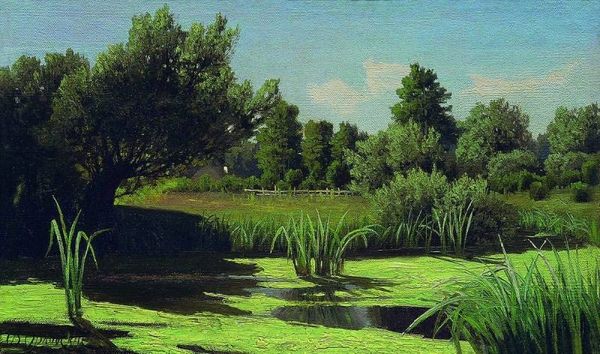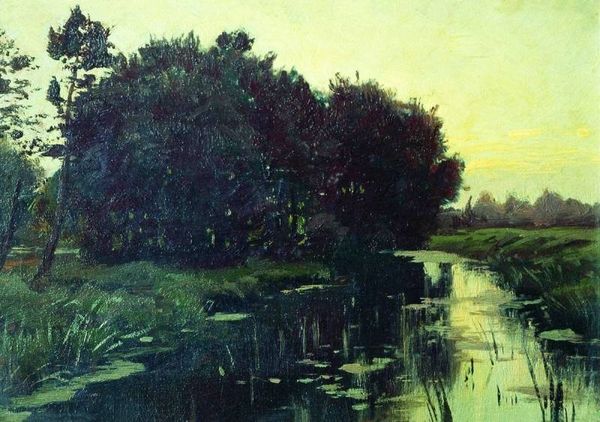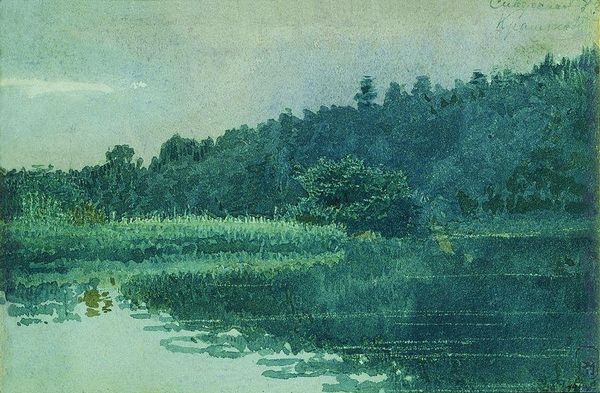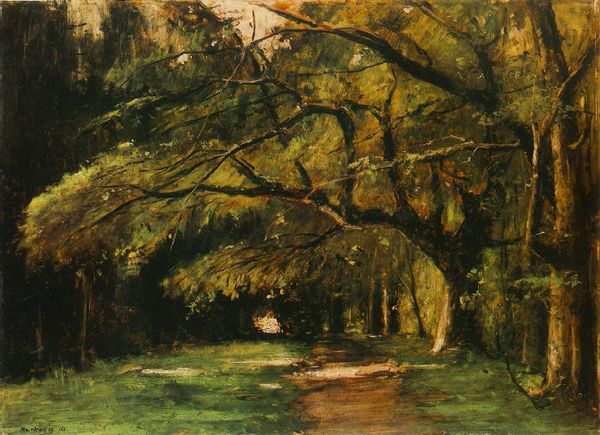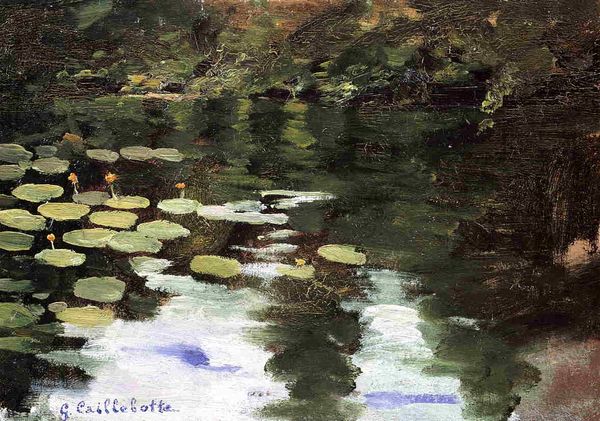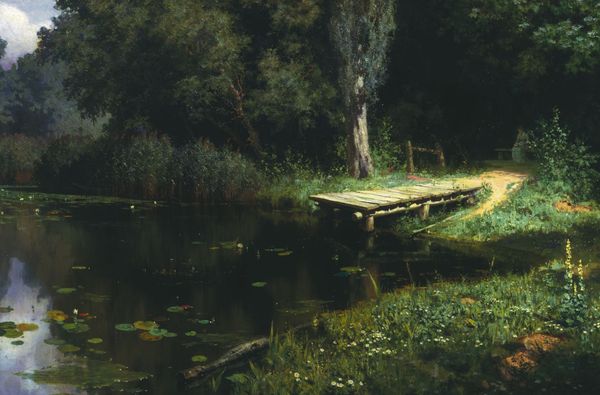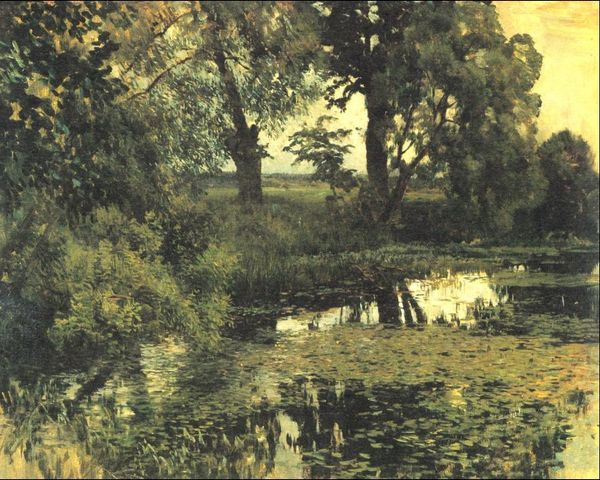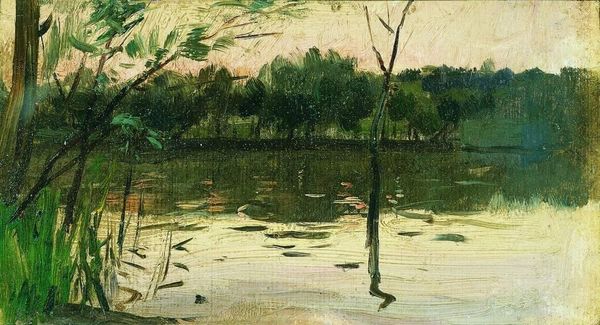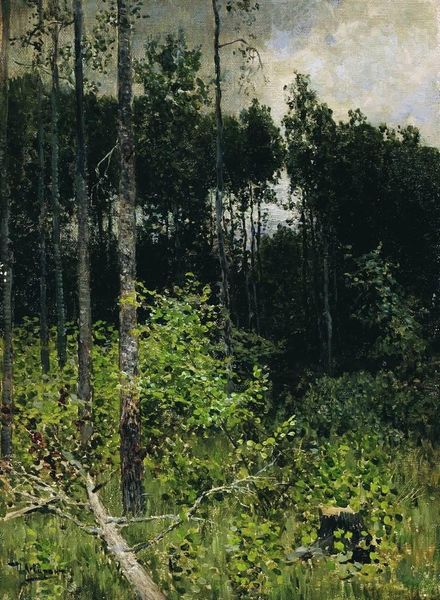
Dimensions: 19.5 x 30 cm
Copyright: Public domain
Curator: Isaac Levitan's 1898 painting, "Water Margin (A Pond)," executed in oil, immediately strikes me with its rather somber mood. Editor: Yes, the density of the green is quite remarkable, creating a kind of oppressive beauty. Look how Levitan uses the variations in the green tones, from the almost luminescent shades near the horizon line, down to the dark near-black shadows that dominate the lower portion of the painting. It’s an interesting visual dichotomy. Curator: Water and ponds in folklore and mythology frequently symbolize the subconscious and untapped potential. Considering the Romantic era in which Levitan painted, could this pond be interpreted as a gateway into the artist's soul or perhaps a shared, collective emotional state? Editor: That's certainly a compelling reading. I see the compositional choices as crucial, though. The artist's arrangement uses vertical lines formed by the trees to frame this liminal space. It almost feels staged or architecturally deliberate rather than found or "natural." Curator: The decaying tree stumps emerge almost like solemn statues, perhaps representing the cycle of life, death, and regeneration which resonates in different cultures in various forms. Water as life and renewal seems apt here. Editor: But consider the lily pads. They’re deployed almost like abstract shapes against the smooth reflective surface of the water; I see the materiality of the paint itself as asserting itself, as a series of formal shapes creating rhythm rather than simple botanical accuracy. There’s almost a modernist sensibility lurking. Curator: The balance of light and shadow gives the work depth and, in its own way, seems to imbue this simple landscape with something profound. It encourages reflection on mortality, on our relationship with nature, and maybe the spiritual forces believed to inhabit the world. Editor: In the end, perhaps Levitan invites both readings, allowing us to see, in both its aesthetic arrangements and symbol systems, not merely a depiction of a pond, but a mirror for our inner contemplations.
Comments
No comments
Be the first to comment and join the conversation on the ultimate creative platform.
